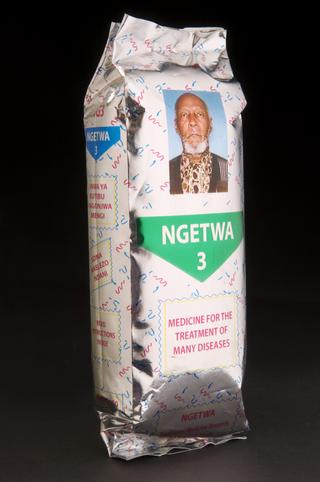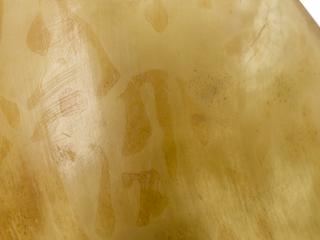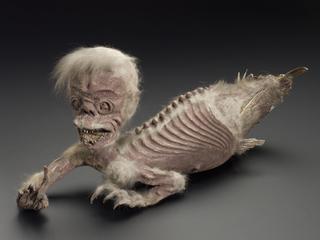




Skin of a jackal used as a medicine man's bag or puppet, Ugandan, c. 1880-1920
A shaman in Uganda, East Africa, probably used this dried jackal skin. Shamen were once referred to as medicine men. The skin may have held herbs, minerals and objects for divination. Distinctive clothes and accessories such as this bag identify healers and show their high status within their community. The skin may also have been used as a ‘puppet like figure’ in healing ceremonies. Traits are associated with different animals within many African cultures. These include bravery (lions) and cunning (jackals). They are linked with individuals such as chiefs or medicine men. The wearer of the skin of that animal can adopt those traits and use them to their advantage.
Details
- Category:
- Ethnography and Folk Medicine
- Collection:
- Sir Henry Wellcome's Museum Collection
- Object Number:
- A645093
- Materials:
- complete and skin (animal)
- Measurements:
-
overall: 120 mm x 740 mm x 170 mm,
- type:
- medicine pouch
- credit:
- Roscoe, J.




